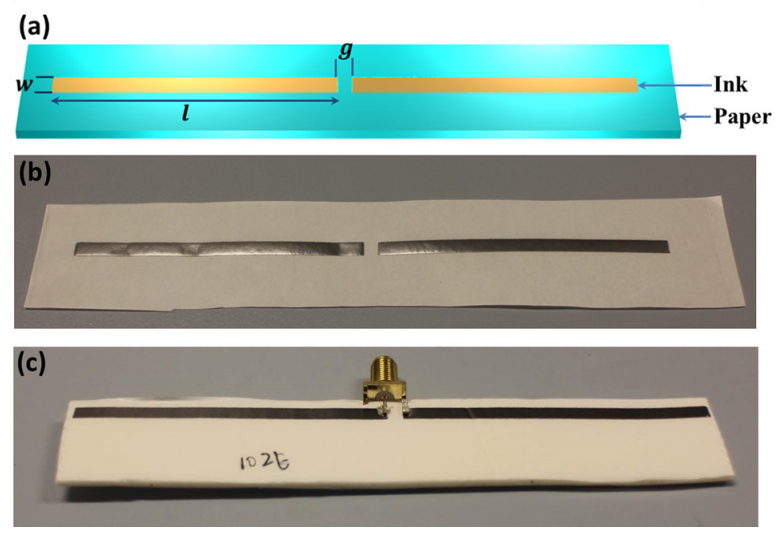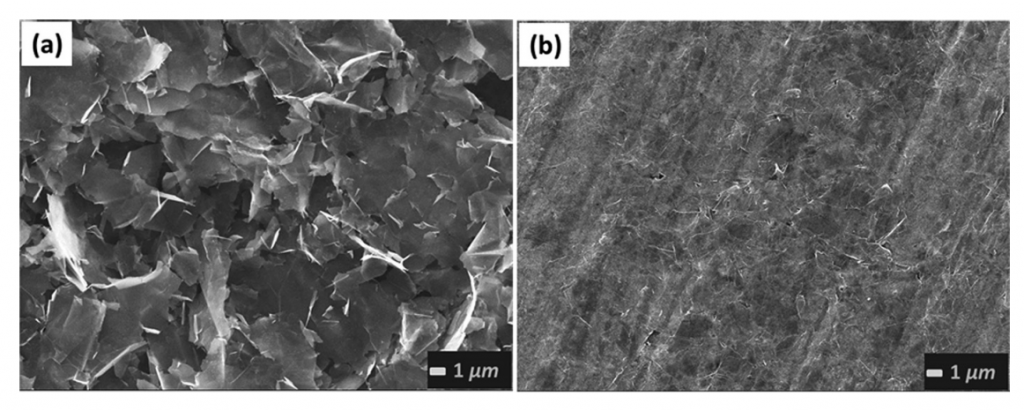The Magic of Graphene Further Defined: Researchers Use Carbon Material for 3D Printing Wi-Fi Antennae
 While graphene may be considered the golden goose of new materials emerging in the 3D printing industry, the fact that it is imbued with conductive features has been a source of question for over a decade now–with one area of debate regarding that of effective dissemination of radio frequency signals.
While graphene may be considered the golden goose of new materials emerging in the 3D printing industry, the fact that it is imbued with conductive features has been a source of question for over a decade now–with one area of debate regarding that of effective dissemination of radio frequency signals.
Now, researchers from the University of Manchester seem to have closed the gap between graphene and wireless transmissions, which they’ve outlined in a recent paper demonstrating how the low temperature processing of graphene ink can be used for making maximum use of its conductive qualities.
In ‘Binder-Free Highly Conductive Graphene Laminate for Low Cost Printed Radio Frequency Applications,’ authored by university researchers Xianjun Huang, Ting Leng, Xiao Zhang, Jia Cing Chen, Kuo Hsin Chang, Andre K. Geim, Kostya S. Novoselov, and Zhirun Hu, new wonders are being reported on in the journal Applied Physics Letters, as they explore with graphene–and it sounds like soon many will be producing 3D printed graphene antennae from this glamorous carbon.
This was certainly the right team for the job. Co-authors Andre Geim and Kostya Novoselov were awarded the Nobel Prize in Physics in 2010 for the discovery of graphene.
 Their findings are pretty impressive in that they’ve discovered through compression, conductivity of graphene laminate is exponentially increased–to the tune of more than 50 times.
Their findings are pretty impressive in that they’ve discovered through compression, conductivity of graphene laminate is exponentially increased–to the tune of more than 50 times.
“Moreover, the formation of graphene laminate from graphene ink reported here is simple and can be carried out in low temperature (100° C), significantly reducing the fabrication costs,” state the researchers.
This obviously has great implications for 3D printing with graphene, as the ink should be an optimal material in fabricating electronics. What their findings discovered is very good news for those hoping to use graphene in the area of lightweight antennae, as results showed graphene laminate can indeed provide “practically acceptable return loss, gain, bandwidth, and radiation patterns.” This should be particularly good in the context of radio frequency identification (RFID) tags such as microchips for pets, and wireless sensor networks that are wearable devices.
“The study demonstrates that printable graphene is now ready for commercial use in low-cost radio frequency applications,” said Zhirun Hu, a researcher in the School of Electrical and Electronic Engineering at the University of Manchester.
There are other highly conductive inks available, such as silver, but it is generally cost-prohibitive. Other choices, like copper and aluminum, are not durable and quickly become corroded; however, they are the current material of choice for RFID wearables as they have been the only one, for the most part–until now.
 Using a method called “rolling compression,” the team of researchers found they were able to increase the conductivity of the graphene substantially, and tested it by attempting to produce a functional dipole antenna which did indeed radiate power effectively after being printed successfully with binder-free graphene laminate on paper, as shown.
Using a method called “rolling compression,” the team of researchers found they were able to increase the conductivity of the graphene substantially, and tested it by attempting to produce a functional dipole antenna which did indeed radiate power effectively after being printed successfully with binder-free graphene laminate on paper, as shown.
“In the fabrication, no high temperature thermal annealing or vacuum condition is required. This not only makes printing compatible with paper/plastics but also lowers the costs of manufacturing significantly. Moreover, the screen printing is ideal for high-throughput and low-cost mass commercial production,” stated the researchers in their paper.
If carbon can be applied specifically to an application, as in the case of making antennae, it’s the perfect solution offering both stability and flexibility, along with the big bonus: affordability. Antennae which can be 3D printed in graphene should offer a big boost to the RFID wearables market, as well as opening up a number of other applications like the Internet of Things and offering numerous media for printing like fabric and plastics.
“The point is that graphene is no longer just a scientific wonder. It will bring many new applications to our daily life very soon,” added Kostya S. Novoselov, from the School of Physics and Astronomy at the University of Manchester, who coordinated the project.
This latest research shows the evolution of graphene from a conductive material that has been impressive in concept to one that will soon show true validity in physical–and retail–form.
How do you think using graphene in 3D printing of conductive products like antennae will evolve further? Tell us your thoughts in the 3D Printing Antennae with Graphene forum thread over at 3DPB.com.
Subscribe to Our Email Newsletter
Stay up-to-date on all the latest news from the 3D printing industry and receive information and offers from third party vendors.
You May Also Like
Profiling a Construction 3D Printing Pioneer: US Army Corps of Engineers’ Megan Kreiger
The world of construction 3D printing is still so new that the true experts can probably be counted on two hands. Among them is Megan Kreiger, Portfolio Manager of Additive...
US Army Corps of Engineers Taps Lincoln Electric & Eaton for Largest 3D Printed US Civil Works Part
The Soo Locks sit on the US-Canadian border, enabling maritime travel between Lake Superior and Lake Huron, from which ships can reach the rest of the Great Lakes. Crafts carrying...
Construction 3D Printing CEO Reflects on Being Female in Construction
Natalie Wadley, CEO of ChangeMaker3D, could hear the words of her daughter sitting next to her resounding in her head. “Mum, MUM, you’ve won!” Wadley had just won the prestigious...
1Print to Commercialize 3D Printed Coastal Resilience Solutions
1Print, a company that specializes in deploying additive construction (AC) for infrastructure projects, has entered an agreement with the University of Miami (UM) to accelerate commercialization of the SEAHIVE shoreline...






























